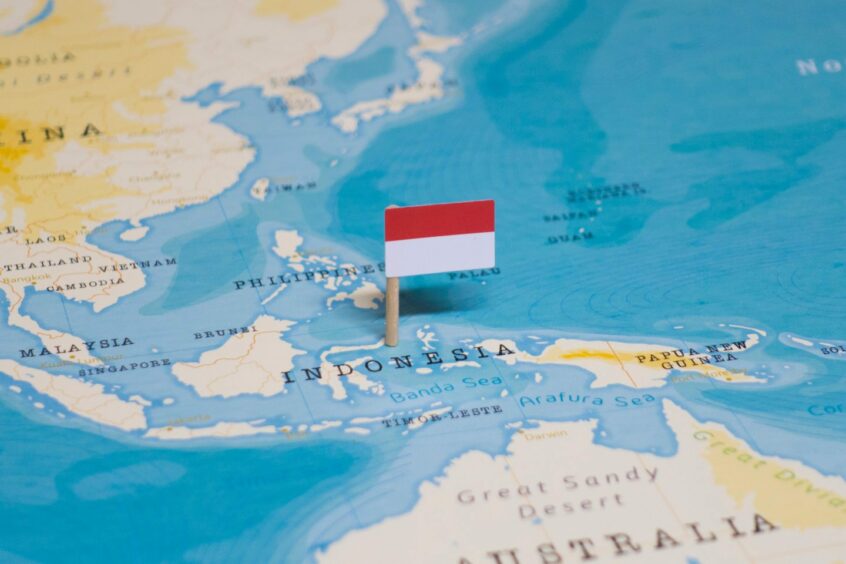
Carbon storage sites in Asia are expected to be among the cheapest globally and this could give the region a big advantage in the expanding market as the world races to decarbonise.
Drilling and well services are relatively cheaper in Asia. This helps make carbon storage projects in the region more competitive economically. However, there are many other drivers too, said Sohini Chatterjee, a CCUS and global upstream analyst at consultancy Rystad Energy.
Crucially, more than 85% of the identified storage for carbon dioxide (CO2) in Asia is either in onshore basins or the shelf region, not in deep waters, she told Energy Voice.
Significantly, the region’s oil and gas industry have multiple decades of experience that has provided operators with enough knowledge and data to identify low risk reservoirs where CO2 can be safely stored without leakage. “Detailed analysis already exists in the form of seismic surveys and geophysical surveys. In short, this lowers the cost of storage as they do not need to carry out detailed pre-feasibility surveys,” added Chatterjee.
Moreover, licensing requirements are not as troublesome or complicated in Asia compared to more economically developed countries, said Yvonne Lam, head of carbon markets and CCUS research at Rystad.
In more developed regions, such as Europe, different licensing requirements exist for CO2 storage. They are more stringent and require operators to perform extra studies to ensure no carbon leakage will occur. Test wells are also needed before a project can start. Therefore, “there are a lot more studies, work, and time, needed to be spent before a company can apply and obtain licenses,” added Lam.
“Currently, except for Australia, most other countries in Asia Pacific do not have these licensing requirements. Significantly, it reduces the time and effort needed to access fields for CO2 storage,” Lam told Energy Voice.
Still, carbon capture and storage (CCS) or carbon capture utilisation and storage (CCUS) is relatively new in Southeast Asia. Although proposed projects have gained momentum in the past two years as more countries made decarbonisation pledges in the lead up to COP26 last November.
CCUS is the more popular option in the region as the associated enhanced oil and gas recovery provides a revenue stream and helps solve the challenges around developing high CO2 fields. Permanent storage on the other hand requires comparatively more studies as well as dedication.
The key driver behind the rise of CCUS in most Southeast Asian nations is corporate decarbonisation goals, rather than policy or a push from governments. For instance, BP and Repsol are both pursuing CCUS projects in Indonesia to enable them to develop new upstream production in line with their ESG commitments.
Customers are also demanding oil and gas with a lower emissions footprint, which is changing the regional dynamics. The developed economies of Japan and South Korea, two of the region’s biggest energy importers, have both targeted to significantly cut emissions by 2030. As a result, they require that oil and gas exporters, such as Indonesia or Malaysia, reduce their emissions during the production process.
“There is a willingness to pay from countries, such as Japan and South Korea. It has become like a hidden rule that exporters will get prioritised if they have a low carbon footprint in their gas or LNG. That is a market driver,” said Lam.
In Asia there are very few policy drivers to incentivise carbon storage projects yet. Except in China, there are no penalties for emitting CO2. Indonesia has a plan to implement carbon pricing, but it is expected to be very low at around $2/tonne, added Lam.
“It’s not significant enough to drive a change in behaviour. The market is stirring behaviour as companies take the initiative,” she added.
In Asia, China is ahead in terms of having the most operating and proposed CCUS projects, followed by Indonesia, which has announced a flurry of proposed schemes in the past year or so. “Indonesia came very late to the game and are picking up quite fast,” said Lam.
Australia, which has more stringent regulations, as well as strong government support, has various CCS and CCUS projects operating, planned or under development. Indeed, the country’s liquefied natural gas (LNG) sector is betting its future on CCS, a technology it says is vital to decarbonisation and remaining globally competitive in the energy transition.
Chevron operates the world’s largest CCS project at the Gorgon LNG plant in Western Australia that has been plagued by technical problems. This facility aims to capture and store 4 million tonnes of carbon emissions every year, but it only operated at just slightly better than half of that in 2021, storing some 2.1 million tonnes.
Another large-scale CCS project in Australia is being carried out by the country’s second-biggest oil and gas producer Santos, which is developing a 1.7 million tonne a year CCS project at Moomba, a gas hub in the outback.
Santos also has advanced plans for a giant CCS facility at the Bayu Undan field offshore East Timor that will be able to store 10 million tonnes per year.
Recommended for you
